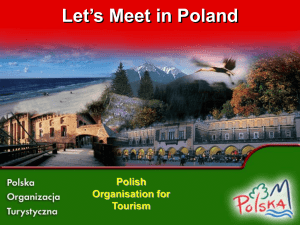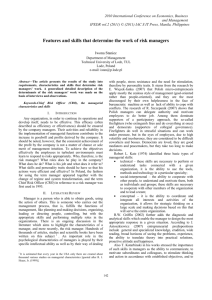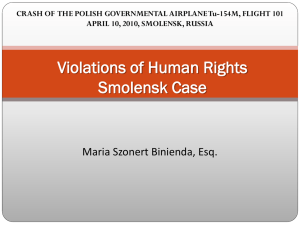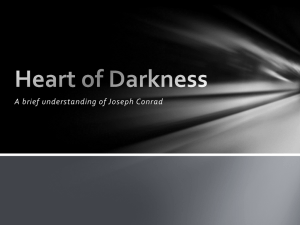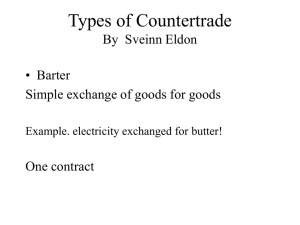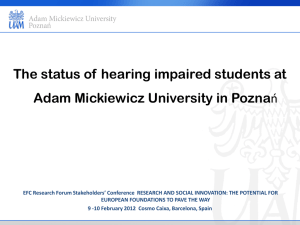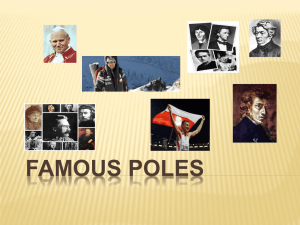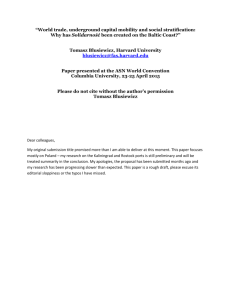Prof. dr hab. Marek Czachor Faculty of Applied
advertisement
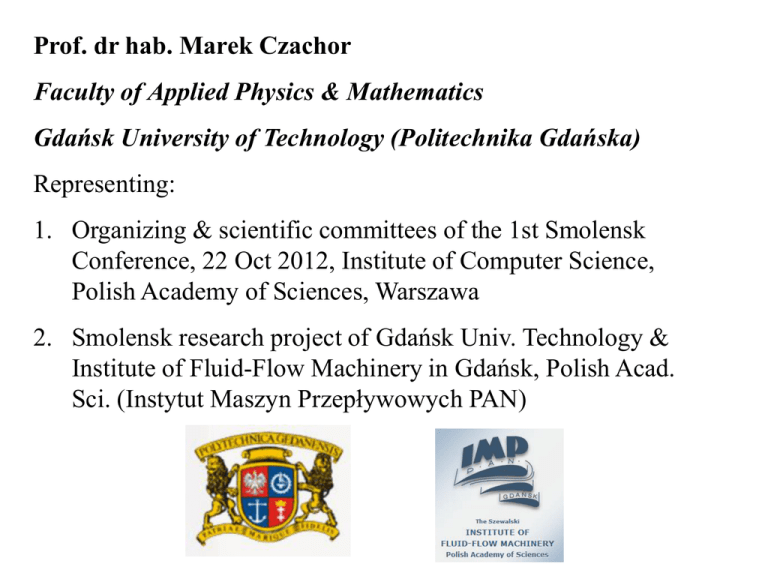
Prof. dr hab. Marek Czachor Faculty of Applied Physics & Mathematics Gdańsk University of Technology (Politechnika Gdańska) Representing: 1. Organizing & scientific committees of the 1st Smolensk Conference, 22 Oct 2012, Institute of Computer Science, Polish Academy of Sciences, Warszawa 2. Smolensk research project of Gdańsk Univ. Technology & Institute of Fluid-Flow Machinery in Gdańsk, Polish Acad. Sci. (Instytut Maszyn Przepływowych PAN) Smolensk Conference Committee: 52 full or associate professors of physics, chemistry, mathematics or technical sciences from 1. University of Warsaw 2. Warsaw University of Technology 3. Cardinal Stefan Wyszyński University, Warszawa 4. National Center for Nuclear Research, Warszawa 5. Gdańsk University of Technology 6. University of Łódź 7. Łódź University of Technology 8. Jagiellonian University, Kraków 9. Kraków University of Technology 10. AGH University of Science and Technology, Kraków 11. Białystok University of Technology 12. Adam Mickiewicz University, Poznań 13. Lublin University of Technology 14. Opole University of Technology 15. Building Research Institute, Warszawa 16. Institute of Physics, Polish Academy of Sciences, Warszawa 17. Institute of Organic Chemistry, Polish Academy of Sciences, Warszawa 18. Institute of Low Temperature and Structure Research, Polish Academy of Sciences, Wrocław 19. Institute of Fluid-Flow Machinery, Polish Academy of Sciences, Gdańsk 20. Institute of Mathematics, Polish Academy of Sciences , Warszawa 21. Institute of Computer Science, Polish Academy of Sciences, Warszawa 22. University of Technology and Life Sciences, Bydgoszcz Goals of the 1st Smolensk Conference • Create space for exchange of scientific results on 10.04.2010 • Create data basis for those who want to perform such research Limiting factors • No posibility of examining the wreckage and „black boxes” • No access to reliable data • Part of evidence irreversibly lost due to improper treatment • No funding of such research is available in Poland Positive elements • In scientific community growing awareness of loopholes of the official investigation • Growing number of scientists who openly declare their will of undertaking the examination Examples of the difficulties we have... Inconsistencies of the official reports (need access to original data) 17 m ? Radar altitude 120° Issues that require laboratory examination (first of all, bring the wreckage to our labs) Data source files are needed and not low-quality plots of the official reports Example: possible problem with engine 3 (not mentioned in the official reports) The twin aircraft 102 is an important source of knowledge on technical details. Experience with servicing in Poland of former Soviet aircrafts shows that details of construction typically differ from the published technical documentation. Polish authorities try to sell 102 to Russia, which expresses interest in this transaction... Funding? Standard paths of funding grants are here unavailable – the project is sensu stricto neither fundamental nor applied Project proposal for National Center for Research & Development (NCBiR) Parametric modeling of the final few seconds of flight of TU-154M in Smolensk on 10 April 2010 Gdańsk University of Technology (Politechnika Gdańska) 5 departments from 4 faculties Institute of Fluid-Flow Machinery, Polish Academy of Sciences (IMP PAN) 3 departments 15 permanent group members + up to 20 persons to hire Duration 2 years Examples of previous activities of the Gdańsk group New elements in our grant proposal • Collision with the birch will include aerodynamic forces • and turbulence Callibration on 1963-1965 FAA experiments New elements... New elements... Callibration on 2010 NASA experiments N. T. Frinki in., CFD Assessment of Aerodynamic Degradation of a Subsonic Transport Due to Airframe Damage, http://fun3d.larc.nasa.gov/papers/AIAA-2010-500.pdf. New elements... • Callibration on 1:10 scale experiment • Modeling the flight of the aircraft after the collision
